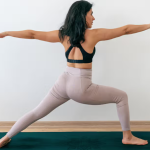Earlier this year, YogaAlliance and YogaJournal teamed up to produce the 2016 Yoga in America Study: a comprehensive study of over 3,000 yogis and non-yogis across the country that produced some interesting results that we in London could afford to pay attention to!
The 2016 Yoga in America Study is the third of it’s kind produced by YogaAlliance and YogaJournal, each one separated by four years. The findings were split into five parts (Yoga in America, Non-Practitioners, Practitioners, Teachers/Trainees and Studios) and each one contained insights from everything to why existing practitioners stopped doing yoga, to what attracts someone to one yoga studio over another.
Why Should Londoners Care?
While the first section, Yoga in America, isn’t directly applicable to our lives as studio owners, teachers and yogis in London, the other parts could be. Once you dispense with the geographical information, there is a lot of qualitative evidence uncovered that I think we can put to good use right here at home. The practice of yoga is universal, so we can safely assume that there must be a universality to yoga practitioners as well. If that’s the case, there’s a lot we can learn about who is attracted to yoga, why people start yoga and what keeps people coming back by examining this study.
We’ve taken apart the 87-page document and pulled out what we think are the highlights and need-to-knows for us on this side of the pond. Read on below for our takeaways, or if you’ve got some time pull up the actual study and take a look for yourself!
See Also: Expect the Unexpected: Quirky London Yoga Classes To Try This Year
Who’s Doing Yoga?
Whenever anyone tells you that ‘numerous studies are saying that more and more people are doing yoga’, this is one of those studies. Their findings are showing that American yogis have doubled in number in the last eight years, and while that’s no surprise to anyone who’s seen the yoga industry grow in London in that time, it might interest you to know who these people are:
28% of yoga practitioners are male and 72% are female.
At first glance this isn’t a big surprise either, so much so that groups like Boys of Yoga have come up specifically to encourage men to do more yoga. If you compare today’s 10 million American yogis to the 4 million from 2012, the amount of male yogis has risen by 250% which shows that our efforts to get more men into classes is working incredibly well.
Practitioner Ages:
18 to 29: 19%
30 to 39: 23%
40 to 49: 20%
50 to 59: 17%
60+: 21%
While a lot of yoga marketing is aimed at younger audiences — later in the study teachers talk about using social media to connect with many of their students — it’s a particular surprise that the percentage of practitioners per age group only varies by 7%. This means that the age range of yoga practitioners is pretty evenly spread across the board.
If we assume that similar trends are happening in the United Kingdom, it is of vital importance that UK teachers can teach students of varying abilities — ideally at the same time! According to this data, a generic open yoga class should have someone from each of these age groups and a handful of men. How do you adapt your teaching to accommodate all these groups, skills levels or reasons people are in your class?
Why Do People Start Yoga?
Q. Which of the following personal reasons motivated you to start practicing yoga? Which of the following personal reasons currently motivate you to practice yoga?
The top two reasons that got people into a yoga class and hooked them to keep going were flexibility and stress relief. When deciding on where to practice, studio cost, convenience and quality of instruction were the top three factors people considered.
(On the lower side of the scale, very few people joined yoga for a medical condition, physical therapy or even weight loss. In the studio environment people were less excited about star teachers, food and beverage service or availability of classes over an hour.)
Essentially, this shows teachers what they should know and what they can expect to hear from the widest array of students. All teachers should be able to answer these two questions at the drop of a hat:
What about people not doing yoga?
The top three reasons people don’t start yoga are, “I’m unsure if it’s right for me,” “I don’t know how to get started,” and, “I don’t exercise.” The top three reasons people stop doing yoga are, “No place locally to go,” “It’s too expensive,” or “I didn’t enjoy it / didn’t do very well.”
As teachers and yoga professionals it’s our job to examine our studios, classes and marketing to minimise these issues where we can. One way for teachers to get the feel for students who are unsure if it’s right for them or people who didn’t do very well is to try your best to make yourself available to your students before and after class. The majority teachers and studios cited word of mouth as the best way of encouraging people to come to their classes.
Studios can constantly examine their price plans and perhaps offer weekly ‘pay-what-you-can’ classes in benefit of a charity and to allow people to come to the studio that wouldn’t normally come. Try re-reading those six things and ask if you are contributing to any of those problems these people are experiencing, and if so how can you fix it?
See Also: I Get By With A Little Help From My Insta-Yogi Friends
The Top 3 Qualities of a Yoga Teacher
Lastly, the top three qualities that students admire in their yoga teachers is that they are:
1. Warm and friendly.
2. Easily understood or clear with instruction.
3. Knowledgeable about the poses.
Every teacher has a wealth of positive qualities, but having a positive and open personality, being able to give concise well-planned instructions and knowing about your poses are the things that resonate with students the most.













